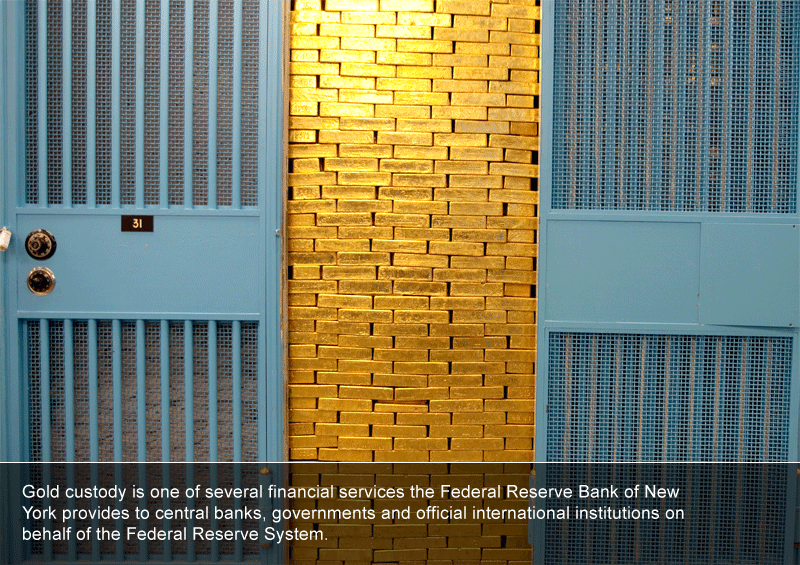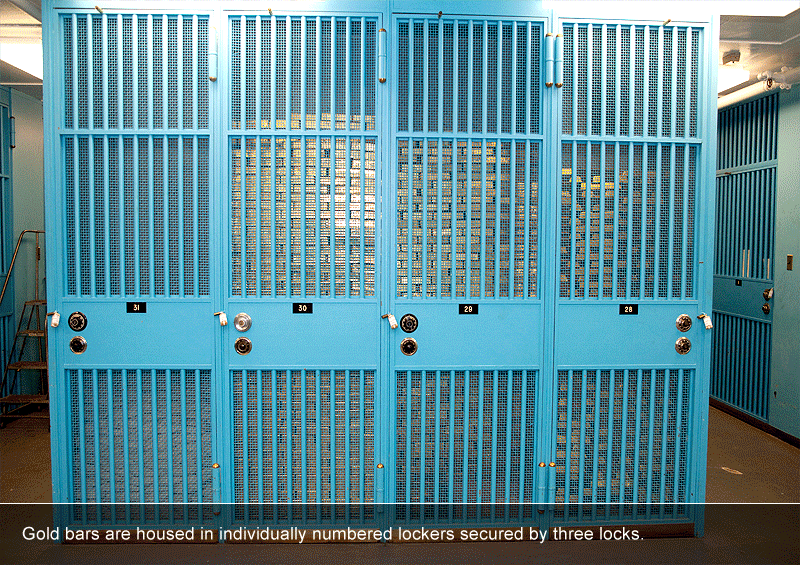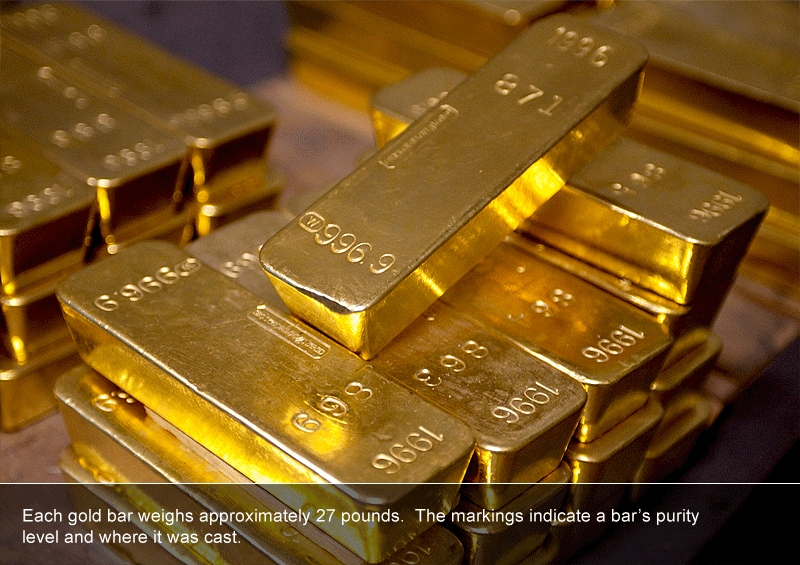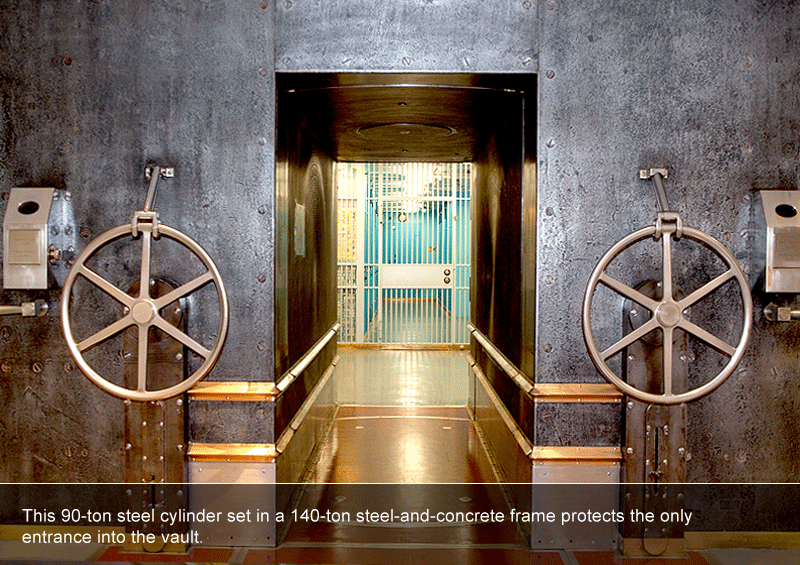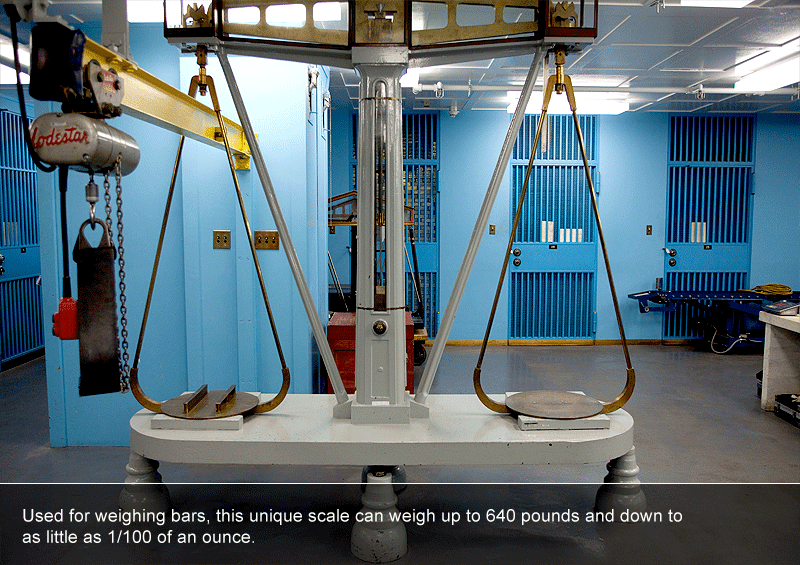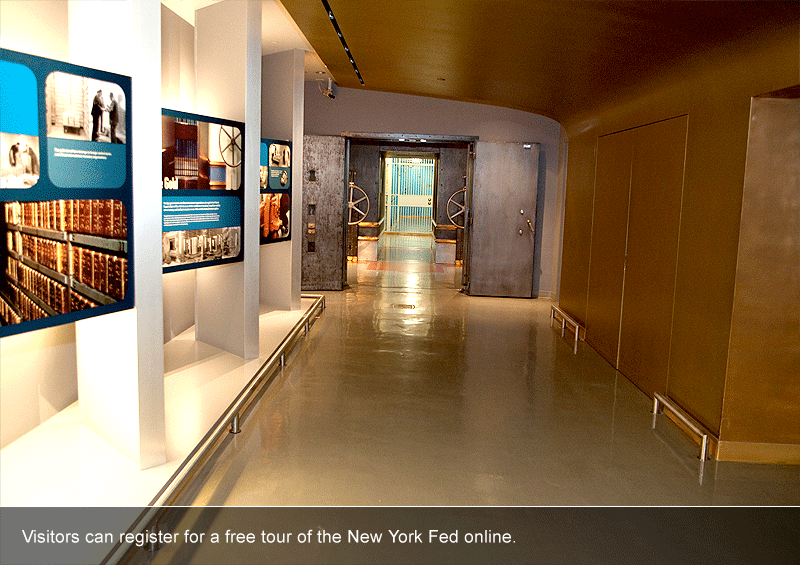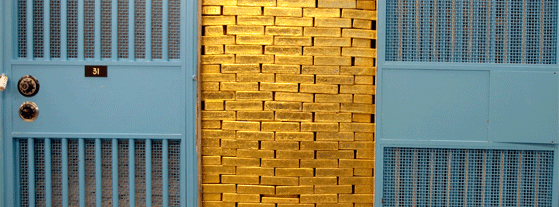
Gold custody is one of several financial services the Federal Reserve Bank of New York provides to central banks, governments and official international organizations on behalf of the Federal Reserve System.
The New York Fed’s gold vault is on the basement floor of its main office building in Manhattan. Built during the construction of the building in the early 1920s, the vault provides account holders with a secure location to store their monetary gold reserves.
None of the gold stored in the vault belongs to the New York Fed or the Federal Reserve System. The New York Fed acts as the guardian and custodian of the gold on behalf of account holders, which include the U.S. government, foreign governments, other central banks, and official international organizations. No individuals or private sector entities are permitted to store gold in the vault.
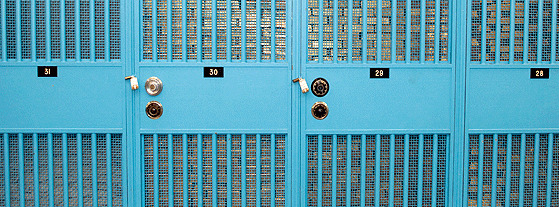
Much of the gold in the vault arrived during and after World War II as many countries wanted to store their gold reserves in a safe location. Holdings in the gold vault continued to increase and peaked in 1973, shortly after the United States suspended convertibility of dollars into gold for foreign governments. At its peak, the vault contained over 12,000 tons of monetary gold. Since that time, gold deposit and withdrawal activity has slowed and the vault has experienced a gradual but steady decline in overall holdings. However, the vault today remains the world’s largest known depository of monetary gold.
As of 2024, the vault housed approximately 507,000 gold bars, with a combined weight of 6,331 metric tons. The vault is able to support this weight because it rests on the bedrock of Manhattan Island, 80 feet below street level and 50 feet below sea level.
Gold bars are transported by elevator from street level to the vault’s basement location. Once inside the vault the bars become the responsibility of a control group consisting of three representatives: two members of the New York Fed gold vault staff and one member from the New York Fed internal audit staff. These three individuals must be present whenever gold is moved or a compartment is opened in the vault—even to change a light bulb. This helps ensure proper safekeeping and maximum security for the gold.
All bars brought into the vault for deposit are carefully weighed, and the refiner and fineness (purity) markings on the bars are inspected to ensure they agree with the depositor instructions and recorded in the New York Fed’s records. This step is vital because the New York Fed returns the exact bars deposited by the account holder upon withdrawal—gold deposits are not considered fungible.
Following the verification process, the gold is moved to one of the vault’s 122 compartments, where each compartment contains gold held by a single account holder (meaning that gold is not commingled between account holders). In rare cases, small deposits are placed on separately numbered spaces on shelves in a “library” compartment shared by several account holders. Each compartment is secured by a padlock, two combination locks and an auditor’s seal. Compartments are numbered rather than named to maintain confidentiality of the account holders.
The New York Fed charges account holders a handling fee for gold transactions, including when gold enters or leaves the vault or ownership transfers (moves between compartments), but otherwise does not charge fees for gold storage.
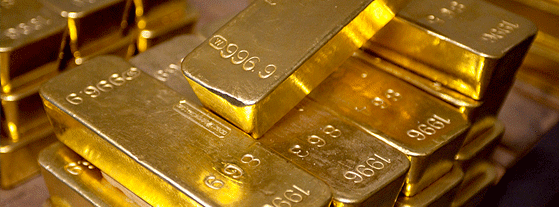
While gold bars are mostly uniform, there are subtle differences that can signify, among other unique characteristics, when and where a bar was cast.
Before 1986, bars cast in the United States generally were rectangular bricks. Currently, however, bars cast in the United States conform to the long-standing international standard for most bars cast overseas, which are trapezoidal in shape. For bars cast in the United States under the pre-1986 standard, a bar’s shape can also indicate where it was cast. Bars from the Denver Assay Office have rounded sides; bars from the San Francisco Assay Office have rounded corners; and bars from the New York Assay Office have square edges. Markings on the bar also reveal information about its production. For example, a set of numbers on the bar often identifies its melt—the molten gold from which a bar is made—while another set indicates its fineness or purity. A stamped seal of a refiner often identifies where the gold was cast.
Surprisingly, gold bars are not 100 percent pure gold. If they were 100 percent pure, the bars would be too malleable to preserve their shape. This would render them difficult to store or move. Therefore, each bar contains a small amount of at least one other metal, such as copper, silver or platinum. Tinges of color can indicate the type of alloy, however modest, from which a particular bar is composed. For instance, traces of silver and platinum give the gold a whitish shade, copper is most often found in reddish bars, and iron produces a greenish hue.
The market value of a gold bar depends on its weight, purity level, and the prevailing market price for gold. Rather than market pricing which fluctuates daily, the New York Fed uses the United States official book value of $42.2222 per troy ounce for gold holdings.
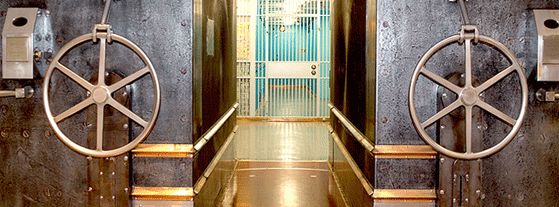
The vault is safeguarded by a comprehensive multilayered security system, highlighted by a 90-ton steel cylinder protecting the only entry into the vault. The nine-foot-tall cylinder is set within a 140-ton steel-and-concrete frame that, when closed, creates an airtight and watertight seal. Also, once closed, four steel rods are inserted into holes in the cylinder and time clocks are engaged, locking the vault until the next business day.
Security is further enhanced by the massive steel-reinforced concrete walls surrounding the vault and 24-hour monitoring of activity inside and outside the vault by security cameras, as well as the use of motion sensors when the vault is closed. Continuous supervision by the vault control group also ensures that proper security procedures are followed at all times. Additionally, the gold is protected by the New York Fed’s robust building security system and the armed Federal Reserve police force.

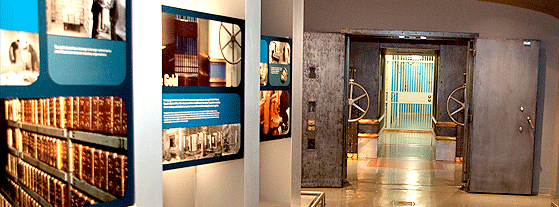
The New York Fed’s Museum & Learning Center is open for school groups to
request a visit; School group visits may include viewing the gold vault, subject to availability. Visit the Museum & Learning Center page to learn more about requesting a school visit.










